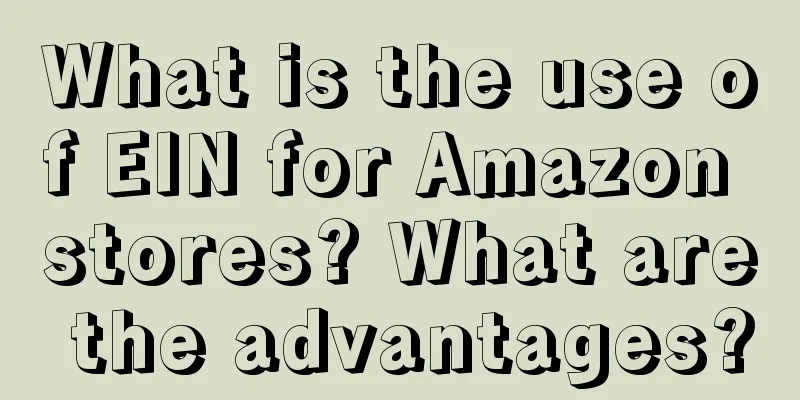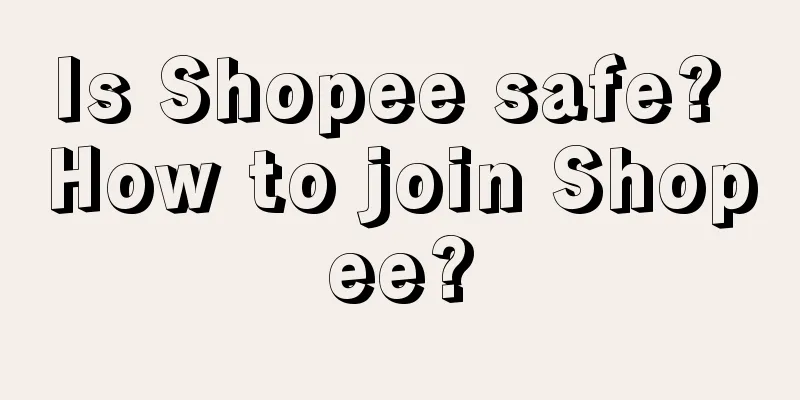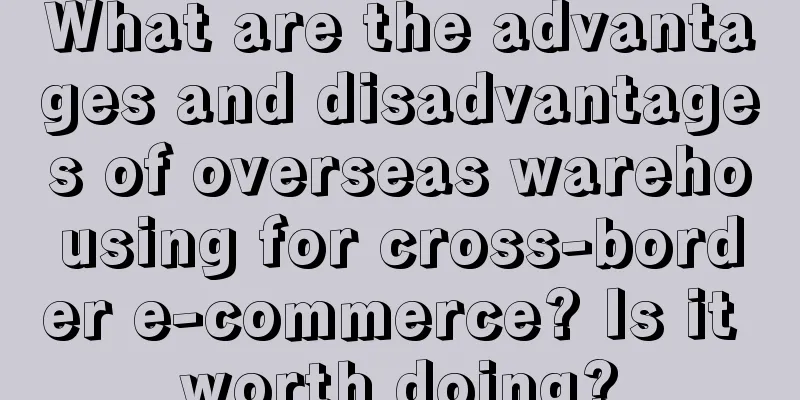In the palace fight over “traffic tax”, how can small and medium-sized businesses survive three episodes?

"Last year, we cut our traffic budget on both e-commerce platforms in half. If the ROI (return on investment) remains at the current level, we will consider focusing only on the platform with better performance." A business data expert for beauty brands said that marketing costs are getting higher and higher, while returns are getting lower and lower. In the past two years, many brands have expressed similar views to the business data faction: the high marketing costs have become an unbearable burden for businesses. This directly leads to a decrease in the profits of merchants. There is a widely circulated merchant revenue formula in the e-commerce circle: Merchant revenue = actual GMV-cost = (traffic * conversion rate * customer unit price * purchase frequency)-(production cost + marketing cost + logistics cost). Many businesses want to make profits, but production and logistics are often hard costs with little room for compression, so they need to generate as much sales as possible with the smallest possible marketing costs. However, one of the difficulties in operating the e-commerce industry at present is that with factors such as various platforms raising their monetization rates and excessive supply from merchants, online traffic has almost dried up, the ROI of merchants' marketing investments has dropped sharply, while costs have continued to rise. This problem has a particularly serious impact on mid- and lower-tier merchants. The era when you could get large sales by just "opening a store, advertising, and doing a few promotions" is gone forever. How can we promote “traffic equality” to prevent many small and medium-sized businesses from “failing to survive more than three episodes” in the battle for traffic? 01 Traffic tax for small and medium-sized businesses is an unbearable burden“I’m used to the fact that traffic has dropped to double digits during Double Eleven.” Registration for the big sale has begun, but Shan Ge (pseudonym) has chosen not to participate this time. On the first day of Double Eleven, Shan Ge's traffic plummeted from four digits to double digits. Even with purchased traffic, he could only barely reach three digits. If he relied solely on natural traffic, it would be even worse. For small and medium-sized businesses, traffic resources are not only expensive, but e-commerce platforms also have very detailed payment standards: clicks, influencers, trailers, and even different locations are all clearly priced. Especially during prime time periods such as the Double 11 promotion, traffic costs will be even higher. The pay-per-click traffic price for certain product categories can reach 30 yuan per click. "We calculated the accounts for the past three years and found that the profits were too meager to even be mentioned. We had no choice but to cut off our arms to survive because we could not bear the cost pressure." "Many peers in the industry are still insisting on operating, but many of them have also spent a lot of money on promotion, and the conversion results are not satisfactory." Shan Ge’s helplessness also reflects the concerns of businesses about traffic in recent years. Encourage small and medium-sized businesses, white-label businesses, and businesses in industrial belts to settle in; comprehensively reduce merchants' store opening fees and commissions; provide merchants with additional support in logistics distribution, return insurance, etc.... This year, "reducing the burden on merchants" is the "main theme" of the entire Double Eleven. Reducing the burden is certainly a good thing, but these costs are nothing compared to the traffic costs. In 2018, the average traffic cost of the e-commerce industry was about 10%-40%. However, in the past two years, some extreme data have appeared, such as "the traffic cost of white-label merchants may be as high as 100%" and "promotion costs have increased by 147.71% in two years". The significant increase in traffic costs in the e-commerce industry has brought greater operating pressure to merchants. For big brands with higher premiums and stronger profitability, such a traffic cost ratio is acceptable. But for small and medium-sized businesses that focus on white-label products, every percentage point of profit is crucial. If you spend money to compete with big brands for exposure, even if you get orders and sales in return, you may not make more money. But this year, major e-commerce brands have also begun closing stores. Taking the women's clothing industry as an example, well-known brands such as "Lola Code" and "My Favorite Wardrobe" have successively announced their closure this year, which is a helpless move in response to the sharp increase in traffic costs. The founder of Lola Code once publicly stated that since 2021, the platform's return rate has increased from 30%-40% to 70%-80%, and the traffic cost has also increased 10 times accordingly. The high traffic promotion fees have put a large number of small and medium-sized businesses in a dilemma: if they invest, the already small profits may be eaten up by the traffic marketing costs; if they don’t invest, they won’t have the “tap water” like big brands. In fact, with the maturity of the entire e-commerce traffic ecosystem, the solidification of the traffic structure has become "inertia". Due to the lack of incremental opportunities, the platform has to delve into the existing traffic or act as a "porter" of traffic. However, the burden of traffic costs has become a difficulty that merchants, especially small and medium-sized merchants, cannot ignore. The “heavy tax” on traffic originated from the platform, but it is also due to the trend. At the beginning of the mobile Internet era, traffic was still a "gold mine" that needed to be developed. The e-commerce industry also began to soar collectively with the explosion of traffic and the improvement of payment and logistics infrastructure. During this period, the e-commerce platform attracted more and more brand merchants and small and medium-sized merchants, and the number of active users increased year by year. The platform built a traffic commercialization channel between supply and demand, providing a more practical matching method for traffic and merchants; and as the platform developed, such marketing resources began to increase continuously, from the opening page, banner advertising space, search bar, to new product festivals, category days, etc. During the incremental development period, the platform's DAU grows exponentially, and what it wants is a prosperous ecosystem, so free traffic distribution is not a problem. As a result, traditional shelf e-commerce has formed an "open secret", that is, whoever has the highest marketing budget given to the platform will get more sales and exposure from the platform. In the "stock era", the situation has changed. Rather than saying that e-commerce platforms are reluctant to provide traffic, it is better to say that the platforms themselves lack traffic. The growth momentum of user scale has slowed down, there is a lack of growth on the demand side, and the supply side has a large scale of merchants and abundant product supply, so the problem of allocating high-quality traffic naturally arises. Now that traffic has peaked, traditional e-commerce companies have to open up marketing channels and start to act as "scalpers" for off-site traffic to stabilize the revenue from this part of the merchants. However, e-commerce platforms themselves also have their own growth red lines. According to the latest financial report meeting of an e-commerce platform, in the future, it hopes to increase CMR revenue, that is, customer management revenue, including advertising fees, sales commissions, etc., to make greater investments. How can we make traffic cheap and ensure that businesses have sufficient traffic? Then the products must bring their own traffic. So, besides content e-commerce, what else can bring its own traffic? Price is undoubtedly the most effective and direct way. Therefore, we have seen that in recent years many platforms have been competing for the mindset of "high cost performance", hoping to win truly effective user traffic. The originator of this gameplay is Pinduoduo. Since its inception, it has adopted the strategy of "price-performance = traffic bonus", which has broken the traffic monopoly to a certain extent. This approach seems to have always worked. Recently, when comparing the product strategies of various platforms, we also found that Pinduoduo does give products of the same quality but more advantageous prices a higher display volume. The platform’s guidance will also make merchants pay more attention to the balance between pricing and traffic. 02 Policy guidance opens a new era of “traffic equality”Although e-commerce platforms are constantly changing their ways of playing, the underlying theme - traffic monetization - has not changed. Today, the e-commerce landscape and traffic competition have entered a new, more stable stage. Even if the business model is different, the reality of excessively high traffic costs has not fundamentally changed, which is not good news for a large number of small and medium-sized businesses online and offline. The question is: Are there any new channels or new models that can better help small and medium-sized businesses alleviate traffic problems? The first is policy guidance. The State Administration for Market Regulation recently issued the "Opinions on Guiding Online Trading Platforms to Play a Positive Role in Traffic to Support the Development of Small, Medium and Micro Business Entities" (hereinafter referred to as the "Opinions"). The "Opinions" proposes to encourage online trading platform companies to rationally allocate traffic resources, with a focus on agricultural product operators, specialty operators and newly-established operators. At the same time, combined with large-scale promotions and other activities, traffic support for corporate merchants on the platform should be increased. This policy aims to solve the problem of "heavy traffic tax" currently faced by small and medium-sized enterprises. In the view of the State Administration for Market Regulation, the platform traffic mechanism needs to achieve five points in order to function reasonably: 1. Rationally allocate traffic resources; 2. Clarify platform traffic rules; 3. Improve the accuracy of traffic supply; 4. Provide supporting measures including product development, warehousing and logistics, data analysis, etc.; 5. Improve traffic "after-sales", that is, the traffic efficiency evaluation mechanism. As more and more companies enter the market, traditional traffic acquisition channels are gradually saturated, which puts small and medium-sized enterprises at a disadvantage in the competition. Therefore, the introduction of policies can be said to be a kind of guidance, hoping that the platform can break the traffic barriers and provide guarantees for small and medium-sized enterprises to seek new development paths. In fact, when the State Administration for Market Regulation issued the Opinion, it was just the Double Eleven preparation period for various platforms and merchants. Although traditional e-commerce platforms still follow the "highest bidder wins" traffic mechanism, they have also made efforts to improve the accuracy of traffic supply and traffic supporting policies. For example, the full-site promotion and paid-free linkage (the conversion of paid traffic and organic traffic) have been very popular in the past two years. This year's Double Eleven, merchants who participate in the full-site promotion can obtain up to 40% of organic traffic, and search traffic can also obtain up to 30% of organic traffic. In addition, the upgraded AI technology of each company has also improved the business efficiency of merchants. For white-label products and factory-direct products, traditional e-commerce companies have also launched a policy of supporting hundreds of billions of traffic, hoping to help these merchants obtain more traffic and price subsidies. But all of this is "fine-tuning" based on the existing traffic mechanism. Under the basic situation where paid bidding for traffic is king, most of the traffic will still flow to the "highest bidder". The smaller the increase in traffic, the more expensive it is. Cai Yuezhou from the Institute of Quantitative and Technical Studies of the Chinese Academy of Social Sciences told Business Data that the fundamental nature of online trading platforms as enterprises determines that optimizing traffic resource allocation and implementing traffic support for small and medium-sized business entities cannot rely solely on market mechanisms, but also requires strengthened government guidance. The meaning expressed in the "Opinion" is very clear. In the official view, e-commerce platforms should play a more active role in traffic, increase the platform's responsibilities, and require the platform to ensure that small, medium and micro enterprises have equal access to market opportunities and help small, medium and micro enterprises to better define their market position and growth space. It is also to encourage more merchants to settle in and individuals to start their own businesses, so as to expand the platform's business scale and market share. 03 Bidding is not the only way outPolicies only provide direction, what is more important is the platform’s reflection on the traffic distribution mechanism. Usually there are two rules for allocating traffic on e-commerce platforms: the highest bidder wins; the lowest bidder wins. At present, many small and medium-sized businesses are adopting a "two-legged" strategy. On the one hand, they are exploring high-quality free traffic as much as possible through SEO optimization; on the other hand, they are exploring the best delivery model for paid traffic to maximize ROI. At a time when e-commerce platforms are using technologies such as AI and big data to improve the accuracy of advertising, improving promotion effectiveness through reasonable delivery is also a common practice for many businesses. From the perspective of merchants, improving the effectiveness of delivery is indeed a roundabout way to reduce the burden, but how to break away from the "bidding mindset" and achieve a more systematic traffic equality is more critical - what they want is to improve the delivery effect, and to avoid being excluded from the traffic distribution system due to inability to pay the "traffic rent". The proposition this points to is: traffic equality. This relies on making the pie bigger - only when there is a continuous influx of fresh water into the traffic pool can enough cost-effective goods be irrigated by traffic, which depends on the reset of the underlying logic of traffic distribution. Most platforms now implement the principle of "the highest bidder wins". "Price" refers to the cost of traffic promotion, which corresponds to the centralized logic of "people looking for products" and the traffic thinking of collecting channel rent: using bidding ranking as the basis for recommending window positions, and using promotion fees as a traffic distribution valve. If merchants want to be given priority or presented more on the shelves, they must purchase the platform's "total traffic package" through bidding. Limited resources, unlimited merchants. This model has led to the current situation: in order to compete for recommended positions or slots, merchants are caught in the dilemma of bidding, raising the traffic costs higher and higher. Those small and medium-sized merchants who cannot afford the traffic promotion fees may not even get a single click. The "price" in "the lowest bidder wins" refers to the price of the product, which corresponds to the decentralized logic of "products finding people" and the "people-centered" idea of returning to the origin of supply and demand. That is, the recommendation mechanism revolves around the most attractive price advantage, and how much exposure a product can get does not depend on buying volume and traffic, but on the cost-effectiveness. In the past two years, "products finding people" has become more and more of a trend. For example, live streaming e-commerce matches products and people through short videos and live streaming content, and through interest tags; while Pinduoduo's recommendation system makes comprehensive judgments based on product quality, price, merchant services, etc. As long as the product has a "quality-price ratio", it can naturally attract a certain amount of user traffic. On this basis, if merchants further increase traffic by placing advertisements, they can effectively create popular products while keeping costs under control. The seemingly simple and crude logic does not lack a reasonable explanation: small and medium-sized businesses can reflect about 15% of their marketing expenses on prices, "create" price advantages on the entire network, and then obtain algorithm recommendations. Merchants use less energy to sell goods, users buy cost-effective goods, and the platform continues to deepen the "cost-effective mentality", forming a set of algorithm-driven positive cycles. A brand once publicly stated to the media that in their traffic structure on Pinduoduo, 70%-80% of the traffic comes from recommendations rather than active searches by users. If there is a price advantage, the proportion of commission costs, after-sales costs and traffic costs can be controlled at 5%-7%, while other platforms usually require 12%-27%. Following this logic, even white-label or novice merchants can sell out their products by relying on free traffic attracted by high cost-effectiveness without having to buy traffic. This will guide merchants' focus from paid promotion to product cost-effectiveness, forcing the supply side to align with high cost-effectiveness. These are two ways of "cutting the cake". Obviously, the latter is more friendly to small and medium-sized businesses than the former. In fact, the two mechanisms of "the highest bidder wins" and "the lowest bidder wins" represent different understandings of the e-commerce industry by the platform. The former is conducive to the rapid expansion of the platform and the orderly entry of merchants during the "land grabbing" period, but it is not applicable during the "city defense" period. More than a decade ago, e-commerce entered the "stock era", and the traffic mechanism also needed a "big change". Nowadays, the development space of small and medium-sized merchants should not be blocked by the "traffic tax", and the end of e-commerce competition should not be "class solidification". By Guo Mengyi Source: Business Data Party (ID: business-data), understand the value of the innovative economy and find the changing moat. |
>>: How did TikTok Shop expand its territory in Southeast Asia?
Recommend
Among Douyin, Kuaishou, Toutiao, WeChat official accounts, and Xiaohongshu, which one is easier to make money by running your own media?
This article compares and analyzes the advantages ...
Can the deleted Amazon parent body be restored? How to restore it?
When it comes to the content of Amazon parent body...
Taobao Live’s mentality has changed
Behind the model of connecting and getting along w...
How can I place an order on Amazon? How long does it take for a new store to place an order?
As more and more sellers open stores on Amazon, it...
Is it profitable to open a store on Lazada? How to increase profits?
Nowadays, no matter which platform you join to do ...
Does eBay allow individual sellers to join? Does it allow individuals to open stores?
Many self-employed merchants also want to do cross...
How to do Wish? Can I make money?
Wish, as one of the world's largest mobile sho...
What is the advertising slogan for new Amazon sellers? How to advertise?
As one of the world's largest e-commerce platf...
Is it profitable to open a store on Shopee? What is the process of opening a store?
It is still very common for individuals to open st...
Does Amazon DHL need to do customs clearance by itself? What is customs clearance?
Amazon's overseas shopping platform is very po...
How can a novice enter the cross-border e-commerce industry? What should a novice do?
More and more friends are preparing to switch to t...
What will happen if Shopify does not renew? How much money is needed to run Shopify?
Shopify's subscription model allows merchants ...
Douyin started selling clothes, quietly launched online, and quickly removed from shelves
Introduction: With the continued popularity of e-c...
What do people want to see when they look at treasure appraisal?
Are you paying attention to the recently popular &...
Taobao quietly builds a "full range" of content
The revision of Taobao Hot Search has brought a lo...









